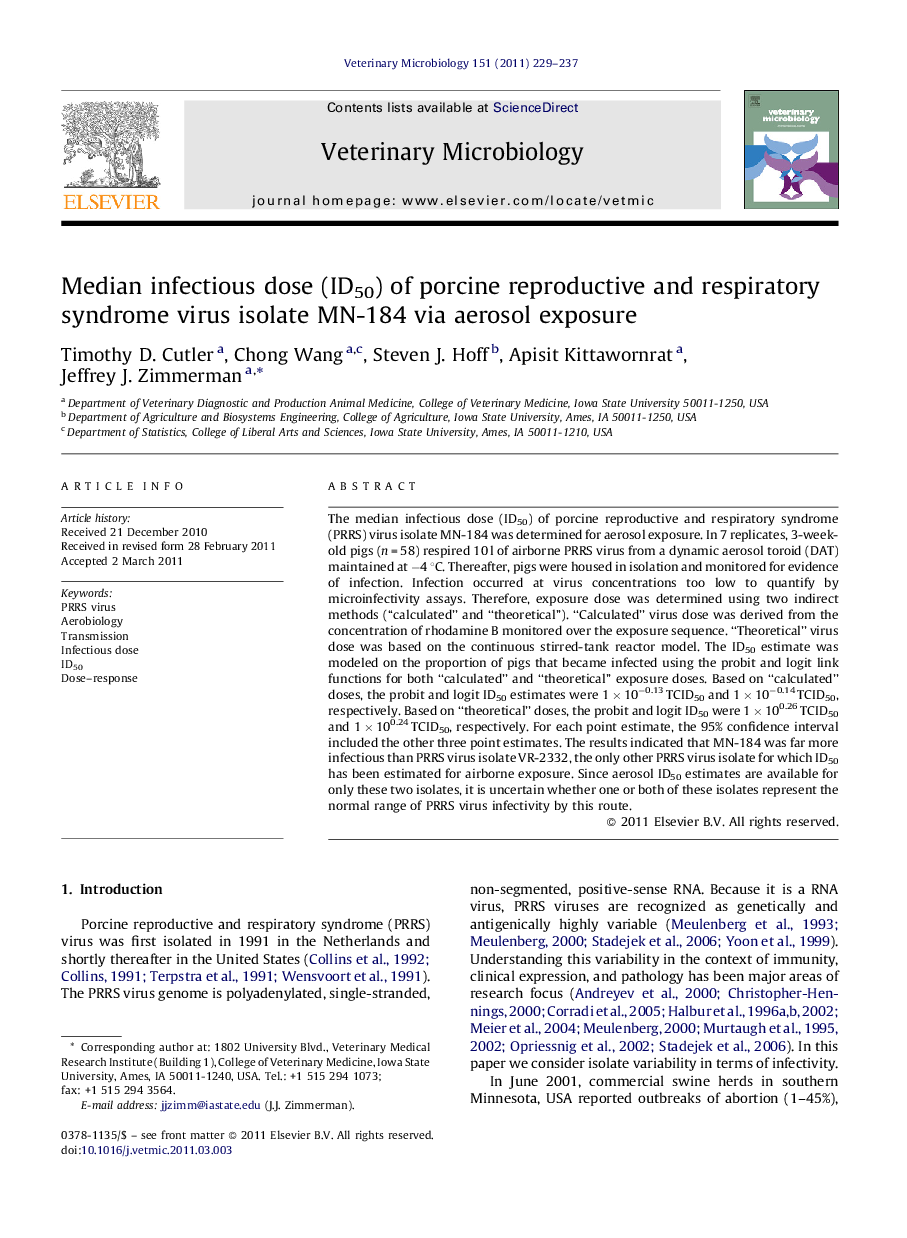| Article ID | Journal | Published Year | Pages | File Type |
|---|---|---|---|---|
| 2467596 | Veterinary Microbiology | 2011 | 9 Pages |
The median infectious dose (ID50) of porcine reproductive and respiratory syndrome (PRRS) virus isolate MN-184 was determined for aerosol exposure. In 7 replicates, 3-week-old pigs (n = 58) respired 10 l of airborne PRRS virus from a dynamic aerosol toroid (DAT) maintained at −4 °C. Thereafter, pigs were housed in isolation and monitored for evidence of infection. Infection occurred at virus concentrations too low to quantify by microinfectivity assays. Therefore, exposure dose was determined using two indirect methods (“calculated” and “theoretical”). “Calculated” virus dose was derived from the concentration of rhodamine B monitored over the exposure sequence. “Theoretical” virus dose was based on the continuous stirred-tank reactor model. The ID50 estimate was modeled on the proportion of pigs that became infected using the probit and logit link functions for both “calculated” and “theoretical” exposure doses. Based on “calculated” doses, the probit and logit ID50 estimates were 1 × 10−0.13 TCID50 and 1 × 10−0.14 TCID50, respectively. Based on “theoretical” doses, the probit and logit ID50 were 1 × 100.26 TCID50 and 1 × 100.24 TCID50, respectively. For each point estimate, the 95% confidence interval included the other three point estimates. The results indicated that MN-184 was far more infectious than PRRS virus isolate VR-2332, the only other PRRS virus isolate for which ID50 has been estimated for airborne exposure. Since aerosol ID50 estimates are available for only these two isolates, it is uncertain whether one or both of these isolates represent the normal range of PRRS virus infectivity by this route.
